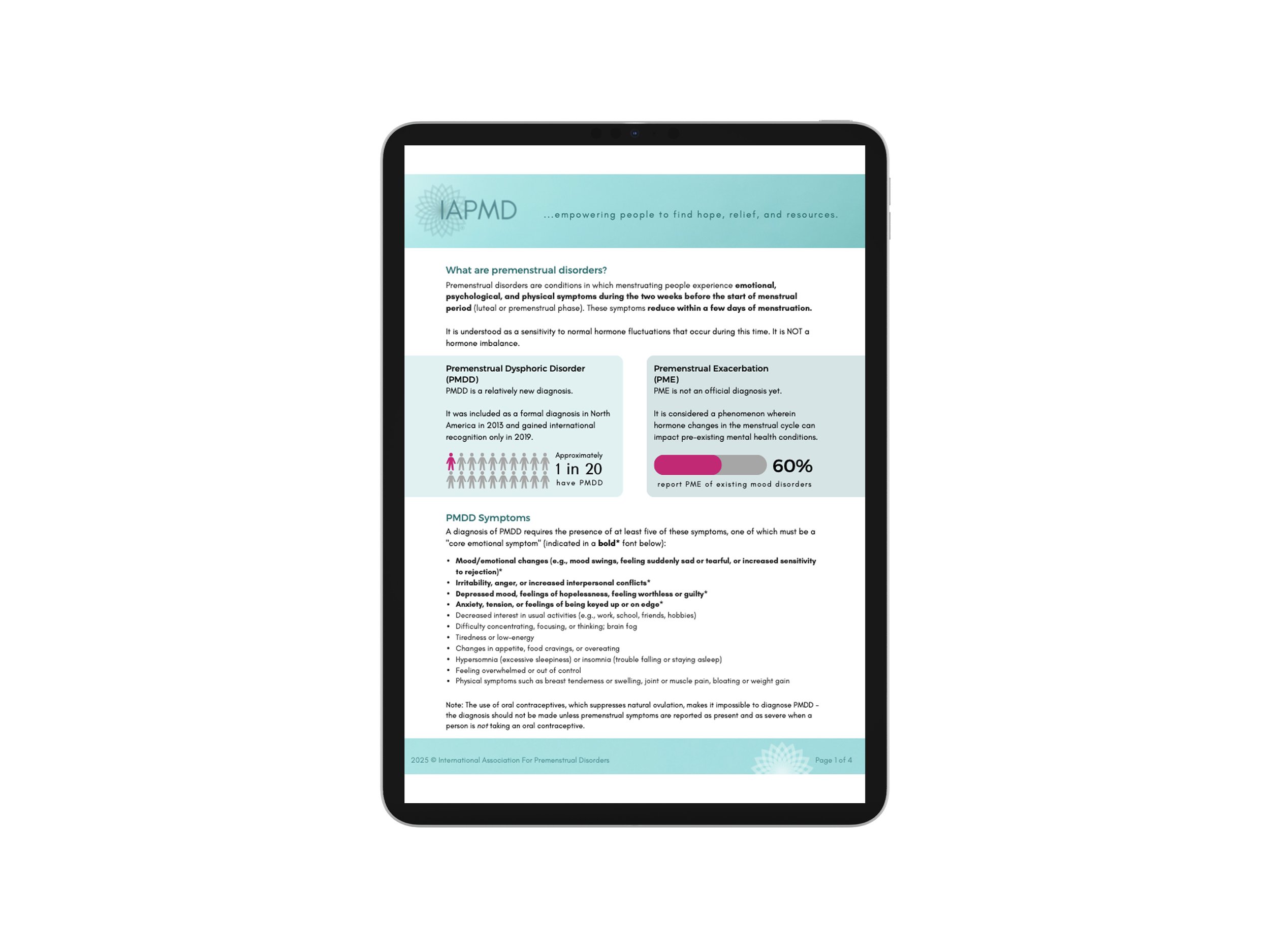 Image 1 of 1
Image 1 of 1


FREE IAPMD Premenstrual Disorders (PMDs) Treatment Guidelines
Treatment for Premenstrual Dysphoric Disorder (PMDD) and Premenstrual Exacerbation (PME) can be complex and highly individual, but you are not alone. At IAPMD, we combine up-to-date research, clinical expertise, and lived experience to guide patients, caregivers, and providers through the treatment journey.
Our evidence-based Treatment Guidelines, developed by IAPMD’s Clinical Advisory Board, offer expert-reviewed recommendations for medical, therapeutic, and lifestyle interventions. These free resources support informed decision-making and compassionate care for PMDD and PME.
Looking for a deeper dive? Our comprehensive eBook, IAPMD PMDD Treatment Options, provides additional clinical insights and tools to help you better understand your options and confidently navigate care.
Whether you’re a patient, caregiver, or healthcare provider, these resources are here to empower you.
Treatment for Premenstrual Dysphoric Disorder (PMDD) and Premenstrual Exacerbation (PME) can be complex and highly individual, but you are not alone. At IAPMD, we combine up-to-date research, clinical expertise, and lived experience to guide patients, caregivers, and providers through the treatment journey.
Our evidence-based Treatment Guidelines, developed by IAPMD’s Clinical Advisory Board, offer expert-reviewed recommendations for medical, therapeutic, and lifestyle interventions. These free resources support informed decision-making and compassionate care for PMDD and PME.
Looking for a deeper dive? Our comprehensive eBook, IAPMD PMDD Treatment Options, provides additional clinical insights and tools to help you better understand your options and confidently navigate care.
Whether you’re a patient, caregiver, or healthcare provider, these resources are here to empower you.




